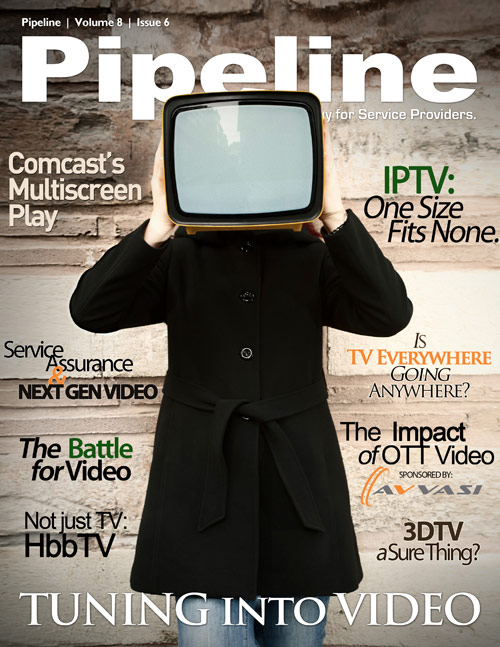By: Jesse Cryderman

When I grew up, video wasn't an entertainment category as much as it was a television, or if you were lucky, a movie screen. Families didn't watch “videos,” they watched television shows or movies, and there was no pause button on the remote control. The commercialization of home video arguably ushered the word “video” into the popular lexicon, and sparked a shift to a consumption model that, for the first time, was not appointment based. In response to demand, soon after came DVRs and VOD, then OTT services and IPTV, and now robust mobile video offerings.
As someone old enough to recall these trends and the pre-internet “dark ages,” I'm what some would call a digital immigrant. The future, however, belongs to digital natives: those born into an on-demand world with global access and a pause button.
If technology trends have taught us anything, they've shown us how much we value video. As Ira Gorelick, Verizon, recently remarked at 4GWorld, “We are a graphical society; people want graphics, they want video, and that's what drives the need for more bandwidth and much lower latency.”
In fact, I would argue that most advances in computing over the past 15 years have been spurred on by a demand for a better video experience. High speed DDR memory and multi-threaded chip topology began life in video cards. Hard drives would probably still be labeled in megabytes, if it weren't for video and high-resolution image file sizes. The “need for speed” is really an outgrowth of a desire for a high-quality video experience.
Research from numerous outlets confirms the mammoth demand for video, and tells us demand is increasing. Given these facts, how are telcos, MSOs, and OTT players faring in the battle for the video customer of today, and more importantly tomorrow?
The Landscape
Video offerings from telcos Verizon (NYSE: VZ) and AT&T (NYSE: T) have made significant inroads into the video market, and despite signs of slowing growth in the third quarter of 2011, the concomitant decline in subscribers on the historical “cable guys'” financial reports paints a picture of a changing video landscape in the U.S. The most recent data on subscriber change from the major players (fig. 1) indicates the customer exodus from cable in favor of other video offerings is continuing unabated.
| Operator | Subscriber Growth | Subscriber Total |
| Netflix | 1,800,000 | 24.6 million |
| Comcast | -238,000 | 22.5 million |
| DirecTV | 26,000 | 19.4 million |
| Time Warner | -130,000 | 12.6 million |
| Dish Network | 135,000 | 14 million |
| Verizon FiOS | 184,000 | 3.8 million |
| AT&T U-Verse | 202,000 | 3.4 million |
| Cablevision | -23,000 | 3.3 million |
Verizon and AT&T have also released numbers for Q3. Verizon saw an increase of 131,00 new pay TV subscribers in the third quarter, up to 4.0 million FiOS TV subs, and A&T reported its pay-TV subscriber base grew by 176,000 to 3.6 million. Both telcos saw their pay-TV growth slow a bit since Q2 2011, but storm outages and subsequent delays in installation were partially to blame, say AT&T and Verizon. For example, Fran Shammo, CFO, Verizon, 
 told the press that East Coast storms cost the company nearly $250 million, and significantly slowed FiOS installations, which would impact subscriber additions. Nevertheless, both telco-TV and satellite TV have eaten away at the cableco subscriber base. And cheap offerings from OTT players like Netflix have obviously attracted subscribers in droves.
told the press that East Coast storms cost the company nearly $250 million, and significantly slowed FiOS installations, which would impact subscriber additions. Nevertheless, both telco-TV and satellite TV have eaten away at the cableco subscriber base. And cheap offerings from OTT players like Netflix have obviously attracted subscribers in droves.
So it's clear we're living in a new video age, but what is driving this transformation, and how can carriers and their vendors stay competitive in this changing game? After talking with several Tier 1 carriers and top vendors, four main factors emerge that play a role in influencing the success of a video offering: quality, delivery, price, and content.








